The Victorian era, or Queen Victoria’s reign, began on June 20, 1837, and lasted until her death on January 22, 1901.
This era inspired people of various fields, such as inventors: Alexander Graham Bell, and Micheal Faraday, scientists: Mary Somerville, Herbert Spencer, and William Thomson, and empowering women: Florence Nightingale and Elizabeth Blackwell.
Many inventions, Victorian fashion, and discoveries such as electric blub, phonograph, and public flushing toilets took place in this period. They have become crucial parts of today’s modern world.
In a nutshell, the victorian era witnessed a tremendous consignment of scientific, industrial, political, and literature revolutions brought along by famous and impactful personalities.
In this article, I have accumulated a list of 10 revolutionary people responsible for making the Victorian era significant.
How long did the Victorian era last?
Content
The Victorian era began in June 1837 AD and ended in January 1901AD.
However, it can be extended to include the years before and beyond these dates, roughly from the Napoleonic Wars to the starting of the first world war1914.
What was life like in Victorian society?
This era had three social classes: upper class, middle class, and lower class. Those fortunate enough to be born into the upper class were rarely required to do manual labor.
The so-called upper class used to employ the lower class people and treat them inhumanly.
What made the Victorian era such a transitional period?
The era witnessed the world’s first Industrial Revolution, political reform, and social upheaval.
Legends like Charles Dickens and Charles Darwin existed in this era. Likewise, it was the era when the first telephone and telegraph were used.
10. Susan B. Anthony (1820 AD to 1906 AD)

Susan B. Anthony, an American activist, and women’s rights leader, was a prominent figure fighting for women’s liberation.
Anthony circulated petitions advocating for married women’s property rights and liberation. In 1854 AD, she spoke at the National Women’s Rights Conference, supporting more remarkable petition initiatives.
By 1856 AD, Anthony was a part of the American Anti-Slavery Society, responsible for arranging meetings, making speeches, displaying posters, and distributing flyers.
In 1868 AD, Anthony and Elizabeth Cady created the American Equal Rights Association (AERA), which became “The Revolution” periodical.
From 1881 to 1885 AD, she showed her active collaboration on the “History of Woman Suffrage” with Elizabeth Cady Stanton and Matilda Joslyn Gage.
Similarly, she helped establish the International Women Council and organized the World Congress Women Representative at Chicago World’s fair 1893.
The 19th Amendment was named the Susan B. Amendment as the final tribute to her. Likewise, she was also the first woman from the non-fictional category to have been depicted in the currency of the United States.
9. Micheal Faraday (1971 AD to 1867 AD)
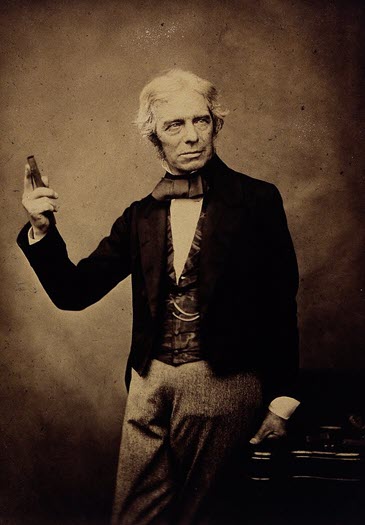
Michael Faraday FRS was an English scientist who significantly contributed to electrochemistry and electromagnetism.
In 1831 AD, he developed electromagnetic induction as the basis for electric transformers and generators. This breakthrough was critical in transforming electricity from a curiosity to a powerful new technology.
He focused on developing his thoughts on electricity for the rest of the decade. As a result, ‘electrode,’ ‘cathode,’ and ‘ion’ were coined terminologies.
Also, the term ‘farad,’ initially referring to a unit of electrical charge, was referred to as a unit of electrical capacitance, based on his surname.
8. Charles Darwin (1809 AD to 1882 AD)

Charles Darwin, a British scientist, and biologist, was best recognized for his evolutionary theory and deep understanding of natural selection.
Darwin went on a voyage as a naturalist aboard the HMS Beagle, a ship of the British Royal Navy, in 1831 AD.
He traveled to Brazil, Argentina, Chile, and the Galápagos Islands, where he spent most of his time collecting plants, animals, rocks, and fossils.
He crammed all his specimens into containers and shipped them to England on several ships. This research led him to his most famous discovery of “Natural Selection.”
In 1859 AD, he released the Origin of Species, which had his theories on evolution and natural selection.
7. Florence Nightingale (1820 AD to 1910 AD)
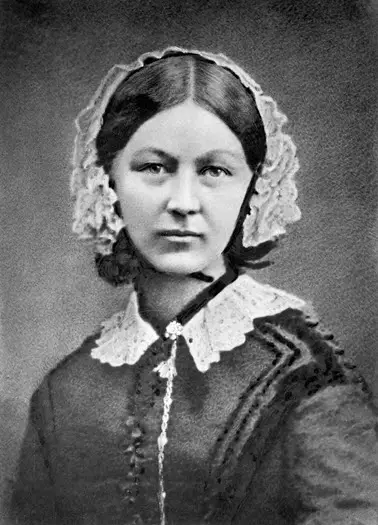
Florence Nightingale, a British nurse, philanthropist, and statistician, was best remembered as the foundation of modern nursing. Her work led the whole nursing profession into a highly dignified profession in society.
The Crimean War of 1854 AD was one of the biggest wars in history. It was the war of Britain, France, and Turkey against Russia, where thousands of military people were injured.
Together with 38 nurses, Florence traveled to a British military barracks on the outskirts of Constantinople (Istanbul). Florence saw that the health conditions in these camps were awful.
Injured soldiers were left on the floor, and a few medics anxiously tried to handle patients in a filthy atmosphere with limited facilities. Florence applied her mathematical skills to record the hospital’s death rate.
According to statistics, 600 soldiers died from contagious and infectious diseases for every 1000 injured soldiers.
The solutions of Florence were essential. She made an effort to maintain a clean environment. In addition to that, she also sent medical supplies, clean water, and healthy food.
The mortality rate dropped from 60% to 42%, and she was honored as “The lady with the lamp in history.”
6. Thomas Edison (1847 AD to 1931 AD)
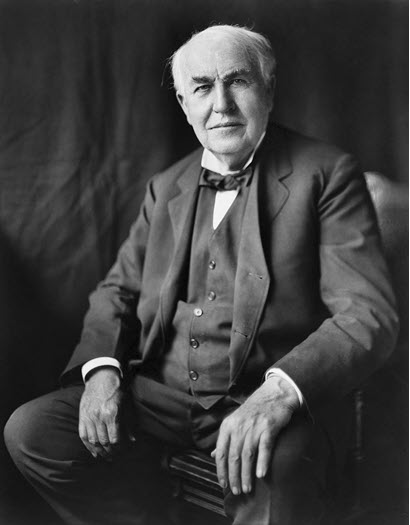
Thomas Alva Edison was one of the most successful inventors of all time. He invented the incandescent light bulb, the phonograph, the enhanced telegraph, the telephone, and the motion picture camera.
In 1878 AD, Edison set his sights on creating a safe, low-cost electric light to replace the gaslight, a problem that experts had been pondering for 50 years.
In October 1879 AD, he made a breakthrough with a platinum filament light bulb. In 1880, he discovered carbonized bamboo as a feasible filament replacement, which proved to be the key to a long-lasting and economical light bulb.
He founded an electric light firmly in Newark in 1881 AD and moved his family to New York the following year.
In the age of electricity, he is credited with laying the groundwork for modern technology and society.
5. Elizabeth Garrett Anderson (1836 AD to 1917 AD)

Elizabeth Garrett Anderson was a visionary physician who founded the New Hospital for Women in London in 1871 AD. The hospital only employed female doctors.
She became the first woman to qualify as a doctor in the United Kingdom when she completed the Society of Apothecaries’ tests in 1865 AD. Afterward, the Society of Apothecaries closed its exams to women to prevent others from following her lead.
She was the first (and for 19 years only) female member of the British Medical Association when she graduated from Paris with a medical degree in 1870.
Anderson co-founded the London School of Medicine for Women in 1874, the first medical school in the United Kingdom to train women as doctors.
Between 1883 AD and 1902 AD, Garrett Anderson served as dean of the London School, later becoming a college of London University and part of University College London as the Royal Free Hospital of Medicine.
London’s New Hospital was later named after Anderson.
4. Lewis Carroll (1832 AD to 1898 AD)
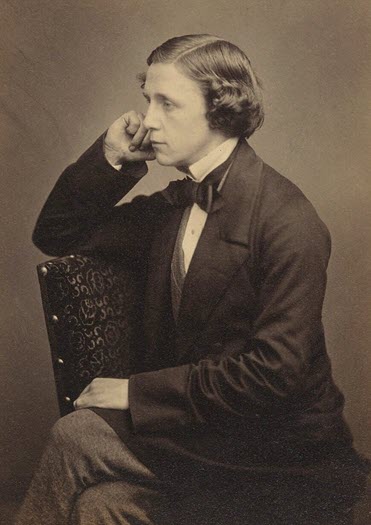
Lewis Carroll was one of the most famous Victorian novelists of all time. Carroll was an introvert, but he loved making up stories for kids.
Alice’s Adventures in Wonderland and Through the Looking-Glass are two of his famous works.
Carroll loved to entertain children, and Alice, Henry George Liddell’s daughter, was the source of his greatest inspiration. Alice recalls reclining on Carroll’s couch for hours, listening to him telling fascinating tales of dream worlds.
In 1865, Alice’s Adventures in Wonderland was published. Because of its enduring success, Carroll decided to write a sequel, Through the Looking-Glass and What Alice Found There (1871 AD).
These books are amongst the most famous children’s books in the world.
3. Charles Dickens (1812 AD to 1870 AD)
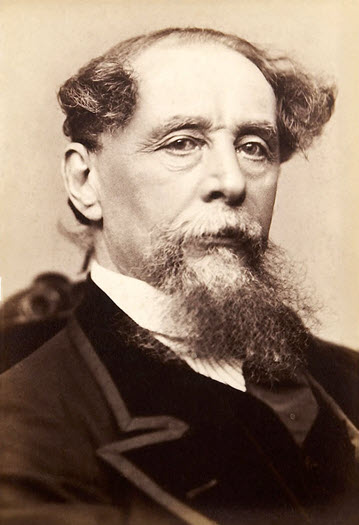
Charles Dickens was famous for everything he was involved in. For instance, he was one of the best British novelists, journalists, editors, illustrators, and social commentators.
His iconic Victorian works include Great Expectations, David Copperfield, Oliver Twist, and A Christmas Carol.
Dickens’s literary career began as a journalist when he first began as a reporter. With The Mirror of Parliament and ‘The True Sun.’
He published a series of sketches under the alias ‘Boz.’ In 1836 AD, he married Catherine Hogarth, the daughter of the editor of ‘ Sketches by Boz.’
The very successful ‘Pickwick Papers’ was published within the same month, and he took off his career and never looked back.
He published autobiographies, edited weekly journals (Household Words and All Year Round), wrote travel books, and managed philanthropic organizations.
He was also credited for creating English words such as Boredom, flummox, rampage, butter-fingers, disheveled, and sawbones.
2. Alexander Graham Bell (1847 AD to 1922 AD)

Alexander Graham Bell was a Scottish-born scientist and an inventor. He invented the first operational telephone in 1876 AD and founded the Bell Telephone Company in 1877 AD.
Bell came to Canada with his family in 1870 AD and pioneered a system for teaching deaf and hard-of-hearing youngsters called visible speech. The visible speech was developed by his father.
In 1872 AD, he established a school for deaf instructors in Boston and worked as a vocal physiology professor at Boston University until 1873 AD.
Bell had been intrigued by the prospect of conveying voice, and by 1875 AD, he developed a primary receiver capable of converting electrical power into sound.
Bell received the French Volta Prize for his invention in 1880, and with the money he received, he established the Volta Laboratory in Washington, where he worked with Hellen Keller.
He also served as a founding member of the National Geographic Society.
1. Queen victoria (1819 AD to 1901 AD)

Queen Victoria reigned from June 20, 1837, until January 22, 1901, as the Queen of the United Kingdom.
This era saw an extraordinary industry expansion in the United Kingdom, with railways, bridges, underground sewers, and electricity distribution networks built across much of the empire.
There were enormous advances in science (Charles Darwin’s theory of evolution), technology (the telegraph and popular press), and terrific civic works, many of which were funded by industrial humanitarians.
Britain’s empire grew by a factor of two, embracing Canada, Australia, India, and various African and South Pacific possessions.
Victoria had some influence over international matters during her reign, expressing her preferences without going beyond constitutional propriety’s confines.
Conclusion
The Victorian era became the world’s first global industrial power, generating much of the world’s coal, iron, steel, and textiles.
It was an era that witnessed some of the most empowering women like Florence Nightingale and Susan B. Anthony.
They brought a lot of revolution to society and dignified the role of women in society.
